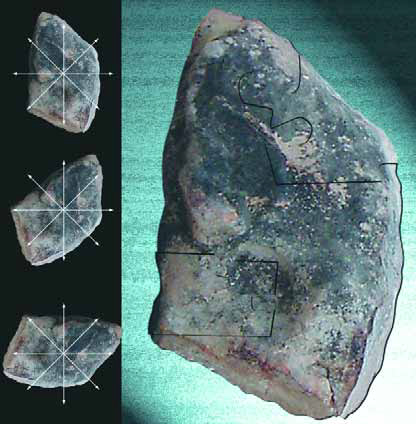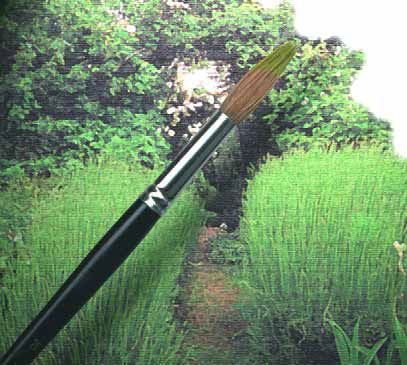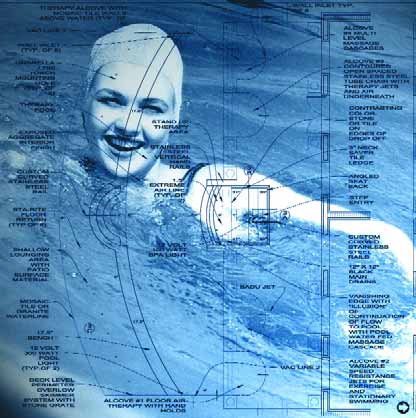When you execute complex projects for sophisticated clients, your ability to satisfy them and their tastes by bringing something different or interesting or unique to the table can make all the difference. As our firm has evolved, we've increasingly come to focus on identifying these compelling touches, which for us most often center on old-world influences that resonate, sometimes deeply, with our clients. I've always loved to travel and have spent extended periods in Asia, Latin America and Europe. At some point, it occurred to me that by working not only with the principles of classical European and Asian garden design, but also with authentic, imported materials and art objects, the work would take on greater meaning and interest for me - and for my clients as well. To that point, our firm had followed a path of influence that still reflects itself in our replication of ancient stone-setting techniques. While traveling in China and Japan, I began spotting stone pieces and other objects we could use directly in our watershapes and gardens and started acquiring pieces for that purpose. This step beyond evoking not only the style but actually using elements of authentic design quickly turned into a powerful element in our work. As we moved further in this direction, the channels opened wider, the creative possibilities blossomed and we soon began incorporating more and more of the materials and ideas that I'd encountered
I've always been fascinated by the concept of urbanism as defined by Thomas Jefferson: He boiled it down to the notion that everyone should have his or her own private space as well as a buffer against the outside world. In a sense, the physical concept of the front yard fits perfectly within Jefferson's utopian ideal. At root, it's an ingenious setup that has probably endured for so many centuries because, on some level, it addresses our primal need to have land all around us. By the very configuration of our residential spaces, we each have a small, open, pastoral area that separates the privacy and sanctity of the home from adjacent public areas, sidewalks and streets. The problem is that in many modern cities and suburbs, the amount of room allocated for front yards in particular has dwindled as property values have soared and lots have become smaller and more tightly packed as a result. And when you combine that spatial shrinkage with the increased desire for safety and privacy on the part of many homeowners, it all works together to place ever-higher premiums on how we choose to make use of our small slices of front-yard land. To my mind, this dynamic set of trends
If there's one thing we all know without any question, it's that nobody is getting any younger. In fact, if you read any of the demographic information available these days about the "graying" of the Baby Boom generation, it's clear that our entire country is becoming older en masse. During the past year, I've experienced for myself what this means to us in the watershaping trades in the form of a dramatic uptick in the number of clients, most of them elderly, who have approached our firm looking for swimming pools primarily for the purpose of aquatic aerobics and other forms of water exercise. For the most part, these prospects and clients have made it clear they would not otherwise be interested in purchasing a pool: They need it, they say, to pursue therapy for a range of physical conditions and ailments. With that trend in mind (and anticipating the needs of my own aging frame as well), I decided to
To me, setting natural stone has always seemed something like assembling a very large jigsaw puzzle: All the pieces have to fit together, and there's definitely a right way and a wrong way to make it happen. I start the process systematically by laying stones out in an adequately large area and then just looking at them. As I go, I visualize how each will work as part of the overall composition and identify stones with either convex or concave contours that might fit together in some visual way. I'm constantly asking myself, "If I put this stone here and this other one right next to it, how will it work? Should I pick another stone and use a different combination?" Nature helps me in coming up with the answers, because
I've never been big on trade shows and conferences. For years I have resisted them in the belief that they were mostly for those who had time to attend them and craved the camaraderie and social opportunities they offered. I've always looked at the programs and have seen that there's usually been something to learn during these events, but I brushed off the possibility of attending because I always thought I could get most of what I needed by working and paying attention to books and magazines. Also, there was always the issue that, as the sole provider in a one-person operation, spending so many days away from my clients and prospects would prove
Wonderful projects often proceed at their own paces. More often than not, high-end clients on either the commercial or residential side will require us to spend a great deal of time and effort in developing, adjusting and revisiting designs so they wind up with exactly the watershapes and spaces that best suit their needs and desires. Sometimes that process is tremendously involved, as has been the case with a project I discussed in a previous "Aqua Culture" installment (May 2004, page 10). The clients are creating what they're calling a "world-class pampering spa" as a major expansion of an existing facility in Jacksonville, Fla. Our work on the project includes a broad range of
Serenity, comfort, repose. Delight in harmony with nature. These were the guiding principles behind The Point, one of 114 elegant homes gracing the 145-acre Hybernia development on the western boundary of Highland Park, a celebrated Chicago suburb located about 25 miles from downtown on a stretch of Lake Michigan known as the city's North Shore. We were initially called to Hybernia by a true visionary, David Hoffman, president of Red Seal Homes, the prime contractor for the development. He told us how his firm had struggled for years to acquire the parcels included in the development and wanted us to see that he was sensitive and attuned to the special nature of the setting and the history of its community. His first request: a design for a building that would house a pool and hydrotherapy spa for two of his most discriminating clients as a safe, secluded, calming harbor from their heavy international business travels. As it turned out, however, this was just the beginning of what would
Water and cement-based materials interact in so many ways and on so many levels that it's tough to sort everything out. From initial issues of hydration and curing to a range of longer-term, maintenance-related concerns, says chemistry expert Jeff Freeman, cementitious products in submerged environments react so distinctly to water's presence that it is indeed essential for watershapers to consider what's up when putting them together.
There's something in human nature that loves the unexpected. From pulling open gifts wrapped in paper, ribbons and bows to the thrill of rounding a forest trail to come upon a waterfall, the sense of anticipation and discovery adds spice to life and generally keeps things interesting. As designers of watershapes and landscapes, we have a tremendous opportunityto use the excitement that comes along with the process of progressively experiencing an environment. And the nice thing about setting up spaces that unfold as you move through them is that they can be organized around simple elements, from free-standing walls, steps or hedges to trees, fences and just about anything else thatpartially blocks, disrupts or interrupts a view. This project, which was first covered in "Details" in the December 2004 issue, is a perfect example of using a sense of






















